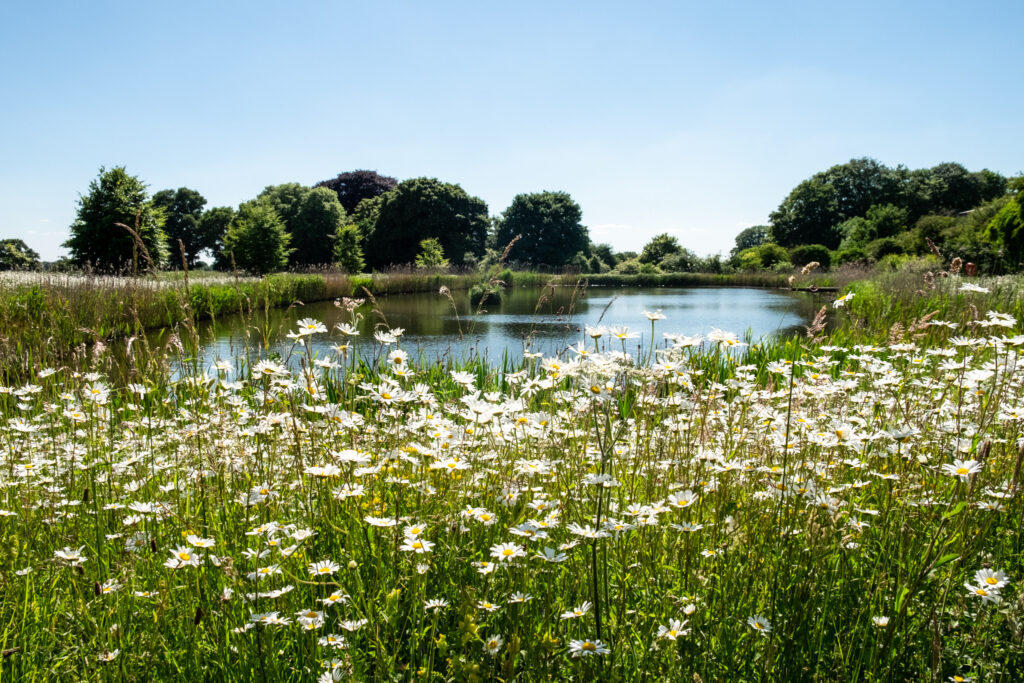As we arrive at the mid point of August, we have another guest blog from Amanda Winstead. Amanda is a writer from the Portland area with a background in communications and a passion for telling stories. If you want to follow her writing journey, or even just say hi you can find her on Twitter.
Online platforms have revolutionised the way organisations and individuals can advocate and raise awareness for a cause. For promoting sustainability and biodiversity in particular, educators can inform the public about how wildflowers play a crucial role in providing habitats and allowing the ecosystem to thrive. By harnessing the potential of crowdfunding, social media, blogs, and websites, individuals and organisations can act as “digital pollinators,” spreading the message of the importance of wildflower gardens and inspiring more people to take action and work towards environmental conservation.
Reaching a Wider Audience Online
Advocates of wildflower-supported biodiversity and sustainability aim to reach others and educate and inspire them to act. For example, you may understand the importance of planting native vs. non-native wildflowers, but others in your community may not. Luckily, online platforms have opened up the possibility to extend this information to larger audiences, allowing you to advocate for biodiversity and sustainability without geographical restrictions.

Although the varieties of native wildflowers may change with location, the overall benefit of wildflower habitats is something you can further with strategic messaging. Here’s how you can harness the power of online persuasion to advocate for change in your community and beyond.
Crowdfunding
One of the most popular resources for advocate groups is online fundraising. With the decline of natural habitats for pollinators and the importance of biodiversity conservation, crowdfunding provides a platform for individuals and organisations to rally support and financial contributions for native wildflower planting initiatives.
By leveraging the reach and connectivity of online platforms, crowdfunding campaigns can engage a diverse community of nature enthusiasts, environmentalists, and concerned individuals passionate about preserving ecosystems. These campaigns can raise funds to purchase native wildflower seeds, establish dedicated wildflower gardens, or support restoration projects in areas affected by habitat loss. Crowdfunding enables people from around the world to contribute to the cause, making a tangible impact on the conservation of pollinators and the enhancement of biodiversity.
Social Media

Of course, online fundraising only works if people are aware of your cause. A great way to raise awareness for wildflower-supported biodiversity is to tap into the top social media sites. Through visually captivating images, informative videos, and compelling storytelling, social media enables you to showcase the beauty and benefits of wildflower gardens. Platforms like Instagram, Facebook, Twitter, TikTok, and Pinterest provide avenues for sharing tips on sustainable gardening practices, highlighting the importance of native plants, and showcasing success stories.
Many platforms also allow you to target specific audiences through ads, but you can also post organically to gain awareness. Social media allows for direct engagement with a wide audience, encouraging discussions, and fostering a sense of community around the cause. By utilising hashtags, partnering with influencers, and leveraging user-generated content, you can amplify your voice and mobilise a collective effort towards a more sustainable and biodiverse future.
Blogs
Blog articles can serve as a powerful medium to advocate for wildflower-supported biodiversity. By creating informative and engaging content, you can use your blog to educate readers about the importance of native wildflowers in supporting ecosystems and promoting sustainability. Through in-depth discussions, scientific studies, and personal narratives, blog articles can highlight the role of wildflowers in providing habitats for pollinators, enhancing soil health, and conserving water resources, and showcase the benefits of using wildflower turf over grass lawns.

You can also share practical tips for incorporating wildflowers in eco-friendly home gardens. Discuss the perks of using native species, and showcase success stories of individuals or communities that have embraced wildflower gardening. Do some keyword research to find out what people are searching for, and tailor your content to show up in those search results. Make posts on your blog able to be shared on social media to encourage conversation and increase traffic. By weaving together scientific research, personal experiences, and practical advice, search-engine-optimized blog articles can show up to the right audience and inspire them to take action, adopt sustainable practices, and contribute to the preservation of biodiversity.
Websites
Unless you are using external blogging platforms like Medium and Quora, you typically cannot have a blog without having your own website. This website should serve as a touchpoint for all of your wildflower-initiative resources. This way, you can direct website visitors to various educational blog articles or external sources. Make navigation and interaction as easy as possible to make sure website visitors can quickly figure out how to take action. Feature practical tips on wildflower gardening, information on seed sources, and resources for engaging with local communities or organisations working towards biodiversity conservation. By creating a user-friendly and visually appealing website, you can inspire visitors to take action, learn more, and contribute to the preservation of wildflower-supported biodiversity.

Inspiring Action
Advocating for wildflowers will automatically appeal to individuals and organizations concerned with climate change and sustainability. While you should certainly target that audience, as well, you can open up your efforts to include a wider audience when using online platforms. Inspire action in everyday gardeners, homeowners, local officials, and decision-makers at institutions near and far. This allows your advocacy for wildflower-supported biodiversity to reach new heights, pollinating the digital world.